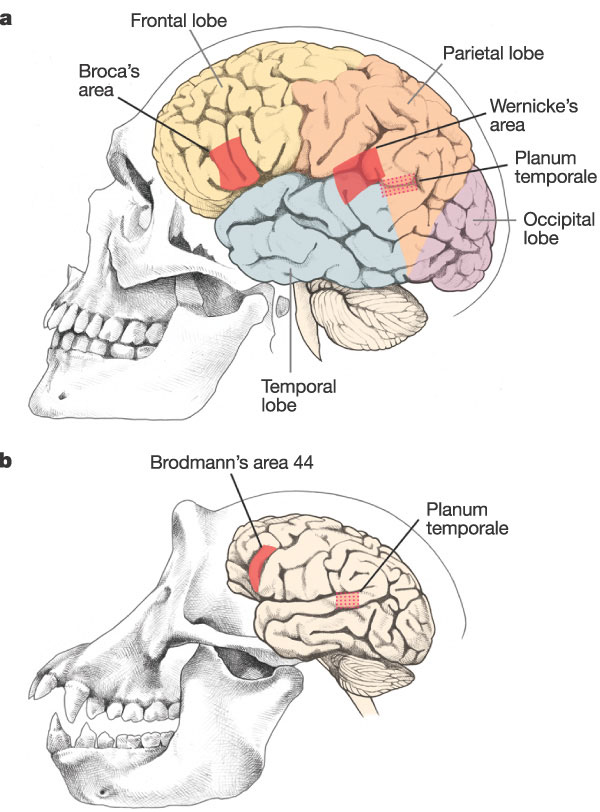Our ancestor would have had to triple their cranial capacity awfully fast.
Evolutionists simply don't have a genetic basis for how this is possible. It's not just the size but the density and the radical development of genes that would have remained virtually unchanged since the Cambrian Explosion.
HAR1 lies in a pair of novel non-coding RNA genes
The 118-bp HAR1 region showed the most dramatically accelerated change (FDR-adjusted P , 0.0005), with an estimated 18 substitutions in the human lineage since the humanchimpanzee ancestor, compared with the expected 0.27 substitutions on the basis of the slow rate of change in this region in other amniotes (Supplementary Notes S3). Only two bases (out of 118) are changed between chimpanzee and chicken, indicating that the region was present and functional in our ancestor at least 310 million years (Myr) ago. No orthologue of HAR1 was detected in the frog (Xenopus tropicalis), any of the available fish genomes (zebrafish, Takifugu and Tetraodon), or in any invertebrate lineage, indicating that it originated no more than about 400Myr ago17. No paralogues were detected in any amniote genome draft. Resequencing in four primates further confirms that all 18 substitutions are very likely to have occurred in the human lineage
An RNA gene expressed during cortical development evolved rapidly in humans Authors: Katherine S. Pollard, Sofie R. Salama, et al. (Nature 443, 167-172 14 September 2006)
It fasinates me that evolutionists are unconcerned about the lack of a scientific explanation or a genetic basis for this unprecedented expansion.
Grace and peace,
Mark
 Especially when you examine the difference between male and female brain chemicals.
Especially when you examine the difference between male and female brain chemicals.
 Arguments from Incredulity are sooo 4 years ago.
Arguments from Incredulity are sooo 4 years ago.
 If I leave my car in the snow for years, I do not think it will look like a better car in the spring.
If I leave my car in the snow for years, I do not think it will look like a better car in the spring.
